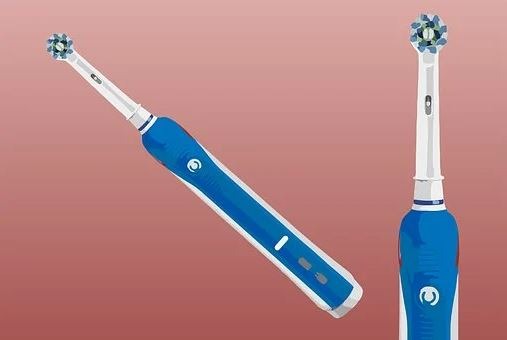Water flossing, often known as water picking, is an alternative to regular flossing. Waterpiks use pulsations and water pressure to clean the mouth. This removes dangerous plaque and food particles. Water picking is a technique that involves a specific machine that sprays water into the mouth and gums. Rather than scraping plaque from the teeth, water picking massages the gums and pushes food away from the teeth.
What You Need to Know About Waterpiks
A water flosser is popular because it is particularly good at eliminating plaque between teeth. Before you buy a water flosser, there are a few things you should know about them. A Waterpik shouldn’t replace brushing or flossing
1. Brushing and flossing should not be replaced with a Waterpik.
While Waterpiks have their place in oral care, they should not be used in place of brushing, flossing, or dental appointments. Because waterpiks can’t eliminate plaque or stuck-on particles, flossing and expert cleanings are still necessary. Using a Waterpik in conjunction with regular dental hygiene will help you maintain the healthiest teeth and gums possible.
2. Waterpiks are popular because they are fun to use.
While flossing is frequently considered a nuisance, and some people even dislike it, many individuals find Waterpiks to be a pleasurable experience. Warm water steaming over the teeth and gums is relaxing and less abrasive than brushing or flossing. Even for those with highly sensitive gums or gum disease, Waterpiks will not cause bleeding.
3. You might be able to clean dental work more effectively.
Cleaning debris out of braces, bridges, and other dental procedures with a Waterpik may be more effective than brushing and flossing. Waterpiks can reach between wires or into microscopic cracks that a Waterpik can simply stream water through. This can help to remove plaque, perhaps extending the life of some forms of dental work and reducing the demineralization concerns that can occur while braces are worn.
4. A Waterpik can be used every day.
You can use a Waterpik as often as you want; it will only benefit your oral hygiene. If you have gum disease or difficulty brushing or flossing, your dentist may advise you to use a Waterpik more than once a day. After flossing, you should use a Waterpik to remove any loose debris, directing the stream of water between the teeth and moving slowly from tooth to tooth.
5. Waterpiks necessitate regular maintenance.
Cleaning and replacing Waterpik tips should be done every few months to six months. Mineral deposits in the tips from the water might clog them and limit performance. Bristle tips should be replaced every three months on average. The water reservoir should be cleaned on a regular basis as well.
Choosing the Best Waterpik Tip
Another area that causes uncertainty is tips. Because of its low-pressure delivery, some people believe the Pik Pocket is the only safe tip to use. Others are hesitant to use it since it is subgingivally situated. Some people worry that if the patient leaves the unit on high instead of low, the tissue will be damaged.
A water flosser is likely to come with a variety of tips. The regular general-purpose tip is the most widely used. If you have braces, however, there is usually a cleaning tip specialized for cleaning around orthodontic equipment. Another tip could be intended to remove plaque from around implanted teeth. Choose the one that best suits your needs and attach it to the water flosser. If you already have a tip on your water flosser, expel it and replace it with a different one. Typically, there is an eject button that releases the data.
1. Pik Pocket Tip
The tip’s openings are smaller at either end than the other tips, limiting the exit pressure. This tip is intended for the administration of medication rather than for full-mouth cleaning. To use, gently press the tip into the desired location subgingivally.
2. The Classic Jet Tip
The Water Flosser’s first tip. A millimeter is held between the tip and the tooth. According to research conducted at the University of Southern California Center for Biofilms, the Water Flosser combined with a Classic Jet Tip set at 70 psi eradicated 99.9% of plaque biofilm from treated regions.
3. The Plaque Seeker Tip
The tip of these filaments can be inserted along the gingival border and into the embrasure area due to the distance between the opening and the end of the filaments. It was created with implants in mind. It may, however, be used by anyone and is ideal for first-time users.
4. The Orthodontic Tip
A short tapered brush on the end of the Orthodontic Tip is designed to clean around orthodontic brackets. A research published in the Journal of the American Association of Orthodontics indicated that using a Water Flosser at 50 psi with a manual toothbrush eliminated three times as much plaque as brushing and flossing, and five times as much as brushing alone in teenagers with fixed orthodontic equipment.
Cleaning the Flosser Tip and Handle
Remove the tip and then the handle from the water flosser. Soak the handle for 5 to 7 minutes in a glass filled with a mixture of 1-part white vinegar and 2 parts water. Soak the tip for five minutes in a glass of either the same combination or hydrogen peroxide (the white vinegar can be swapped for the tip). Rinse them both in warm water when they’ve done soaking.
The Waterpik Water Flosser is a water flosser that is both safe and effective. It has a lot of advantages. A waterpik is easy to use, especially for people with braces or other dental operations like permanent or temporary bridges. It has been tested in 70 clinical trials and has been recommended by dentists and used by the general public for the past 55 years. Users should read all of the instructions carefully and double-check that they understand them. Although each gadget will operate slightly differently, the general processes will be similar.

